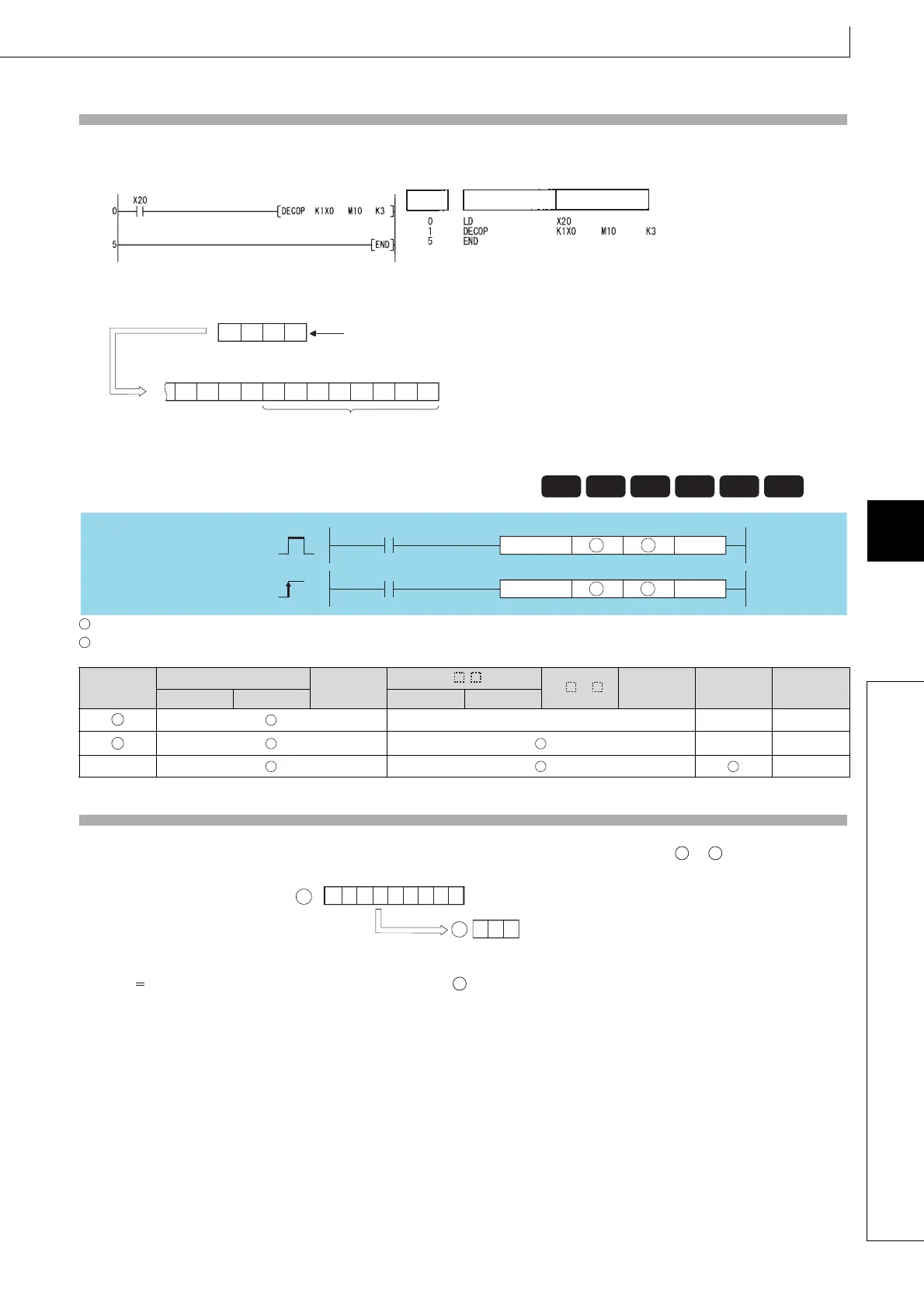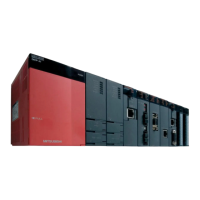359
ENCO, ENCOP
1
2
3
4
4
6
7
8
7.5 Data processing instructions
7.5.4 ENCO, ENCOP
Program Example
(1) The following program decodes the 3 bits from X0 and stores the results at M10 when X20 is ON.
[Ladder Mode] [List Mode]
[Operation]
: Head number of the device where the data to be encoded is stored (Device name)
: Number of the device where the encoding result will be stored (BIN 16 bits)
n : Valid bit length (1 to 8), 0: No processing (BIN 16 bits)
Function
(1) Stores the binary value corresponding to the bits which are "1" included in the 2
n
-bit data of to .
(2) The value of n can be designated at between 1 and 8.
(3) If n 0, there will be no operation, and the contents of will not change.
(4) Bit devices are treated as 1 bit, and word devices as 16 bits.
(5) If more than 1 bit is at 1, processing will be conducted at the upper bit location.
7.5.4 ENCO, ENCOP Encodi ng from 256 to 8 bits
7.5.4
ENCO, ENCOP
Setting
Data
Internal Devices
R, ZR
J\
U\G
Zn
Constants
K, H
Other
Bit Word Bit Word
–– –– ––
–– ––
n ––
Step
Instruction
Device
0 0 0 0 01 0 0 000
M10M17
0
If 3 bits are designated as significant bits, 8 points are occupied.
Decoding result
00
11
0
X0X1X2
When 6 is designated at X0 to X2
Basic
Process
High
performance
Redundant
Universal
LCPU
n
n
ENCO
ENCOP
D
D
Command
Command
ENCOP
ENCO S
S
S
D
S
D
S
D
7
0
86
(Binary value = 6)
543210
0 1000000
110
S
D
D

